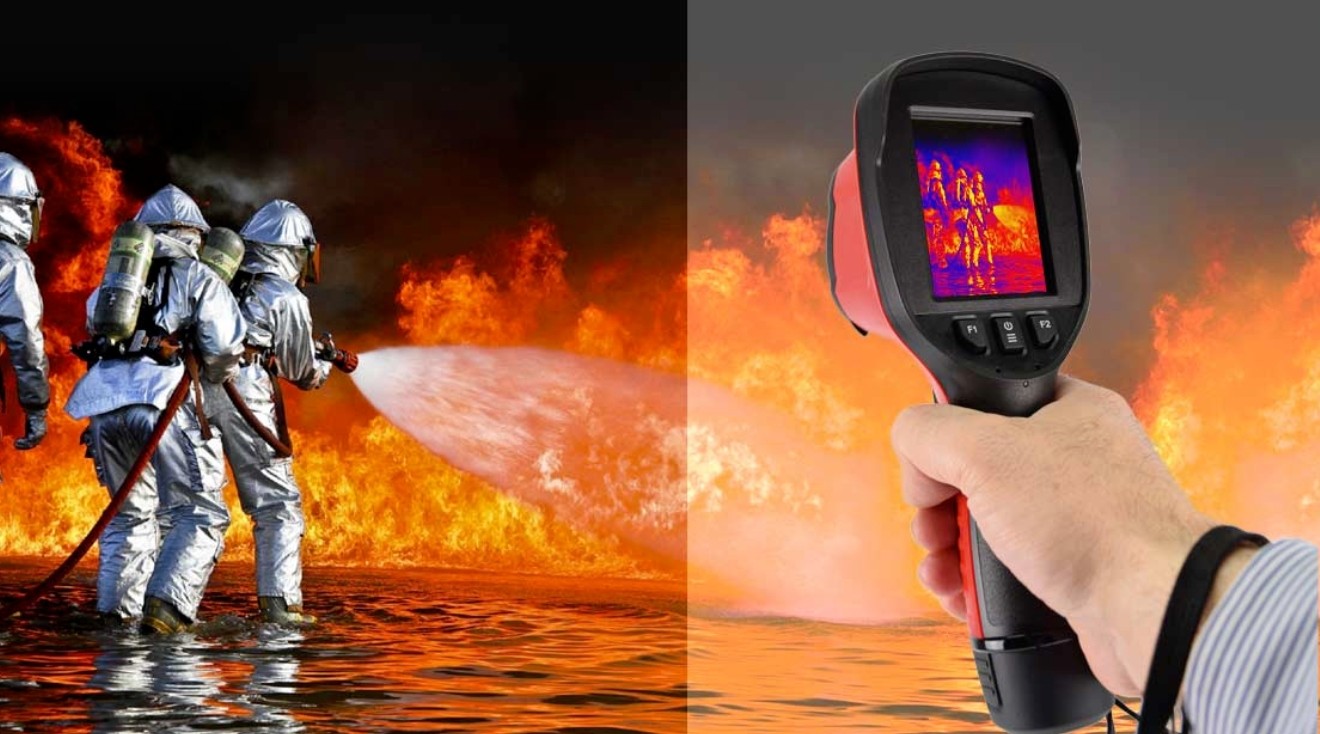The History of Thermal Imaging Cameras

Thermal imaging cameras are very different from ordinary cameras. While typical cameras use visible light, thermal imaging cameras use infrared radiation to create images.
Infrared wavelengths extend beyond the visible spectrum. In simple terms, they are a type of radiation other than red light. The discovery was made in 1800 by astronomer Sir William Herschel, who was trying to design an optical filter by which to reduce glare when viewing the Sun through a telescope. His main goal was to be able to observe and study the sun through a telescope. Even a few seconds of exposure without adequate filters can cause serious eye damage.
In his experiments, he used a red filter, which seems to generate a lot of heat. To measure how much there was, he passed sunlight through a prism while holding a thermometer just outside the red end of the visible spectrum. He noticed that the temperature in the visible spectrum recorded by the thermometer was higher than that of the surrounding air, and concluded that there was another form of light that was invisible to the naked eye.
Herschel called his discovery "thermometric spectroscopy," but he also sometimes called it "invisible rays," and occasionally "dark heat." It wasn't called infrared until the early 1900s.
Further progress occurred in 1840 when the first thermal images made were printed on paper. Herschel calls it a thermal imager.
Next up is the bolometer. Invented by American astronomer and physicist Samuel Langley, the bolometer is a precision instrument that can accurately measure infrared radiation down to 1/100,000th of a degree and can do so at great distances. This discovery paved the way for modern thermal imaging.
Early Applications of Thermal Imaging Technology
The first infrared camera was built in 1929. It was an action camera used by the British Army for air defense operations after the First World War. The military was quick to adopt the cameras, and soon the technology was an essential part of defense strategies on both sides of the Atlantic.
The thermal imaging provided the military with night vision, but a camera that could take still images wasn't invented until 1947. However, the process was tedious, and took an hour to create just one image.
Once the imaging speed increases, the cameras can be used to facilitate rescue operations. For example, firefighters use them to see through smoke when trying to find people trapped in burning buildings. Police use them to monitor or track fugitives in low-light conditions, and various first responders use them to find missing persons in remote areas.
By the end of the 20th century, thermal imaging equipment was much cheaper and more accessible to consumers. Popular with hunters and hobbyists, they are also used in the following trades:
In building inspections, it is used to detect termites, check roofs for leaks, and locate damaged pipes.
In medical diagnostics, it can detect inflammation, blood flow irregularities, and the presence of certain cancers.
In security, thermal imaging is used to confirm and verify the presence of people in a location, such as tracking illegal border crossings or securing rural or remote areas.
The widespread use of the technology has enabled unauthorized surveillance by would-be burglars and nosy neighbors, sparking an outcry over what is seen as a violation of the Fourth Amendment. Still, there are many low-cost versions of the technology with few legal hurdles.
Decent low-res thermal cameras can be had for as little as $300, and there are even low-cost smartphone apps for homeowners, photography enthusiasts, and DIYers.
Thermal Imaging Is Not Night Vision
Many people confuse low-light or night-vision cameras (near-infrared) with thermal imaging, but they differ significantly in scope, application, and functionality.
In addition to the differences in the underlying technology, near-infrared cameras also require some visible light to work. Without at least some light, the image won't be illuminated and won't be seen. Many night vision devices have LED lights that illuminate the area in front of the camera, but they have a much shorter range than infrared cameras.
To give you an idea of the difference, infrared imaging, such as those used by law enforcement, can accurately read license plates from almost a mile away. On the other hand, the best NIR cameras will probably give you a range of 150 feet or so, and only under the right conditions.
Thermal imaging cameras, on the other hand, can detect infrared waves from any hot object. Since different objects have different temperatures, it creates a contrast that helps us discern differences between objects. Essentially, thermal imaging cameras can illuminate objects in total darkness, while night vision technology cannot.
Advanced Thermal Imaging Technology and Artificial Intelligence
Today, nearly every industry is leveraging exciting new digital technologies such as artificial intelligence (AI) to automate processes, increase efficiency, and reduce costs across the organization.
By combining thermal imaging technology with artificial intelligence detection, automakers, and logistics companies can easily improve driver safety and efficiency, reduce costs and reduce liability, thereby improving cost efficiency, thereby directly converting value into profits.
Buy Infrared Thermography Equipment from Javol Vision
Javol Vision is a professional custom infrared thermal imaging equipment manufacturer. Relying on the multi-spectral high-sensitivity photoelectric sensor chip of advanced compound semiconductor materials, with deep learning AI algorithm as the engine, integrating low-light night vision technology, infrared thermal imaging technology, short-wave infrared technology, and multi-spectral fusion technology, the company designs, develops and manufactures advanced Its imaging products and system solutions are widely used in applications such as machine vision, autonomous driving, drone payloads, high-end manufacturing, and medical diagnosis. If you want to order infrared thermal imaging equipment, please contact us.
